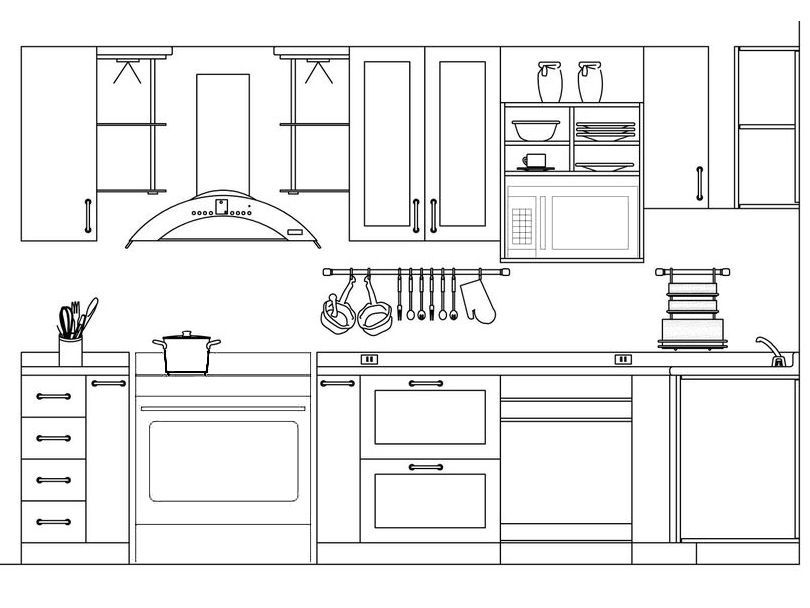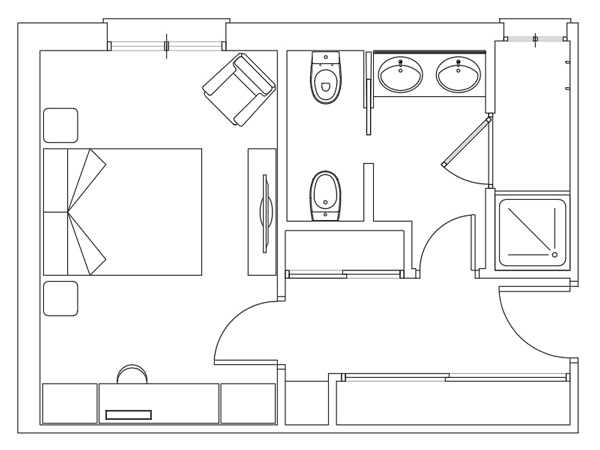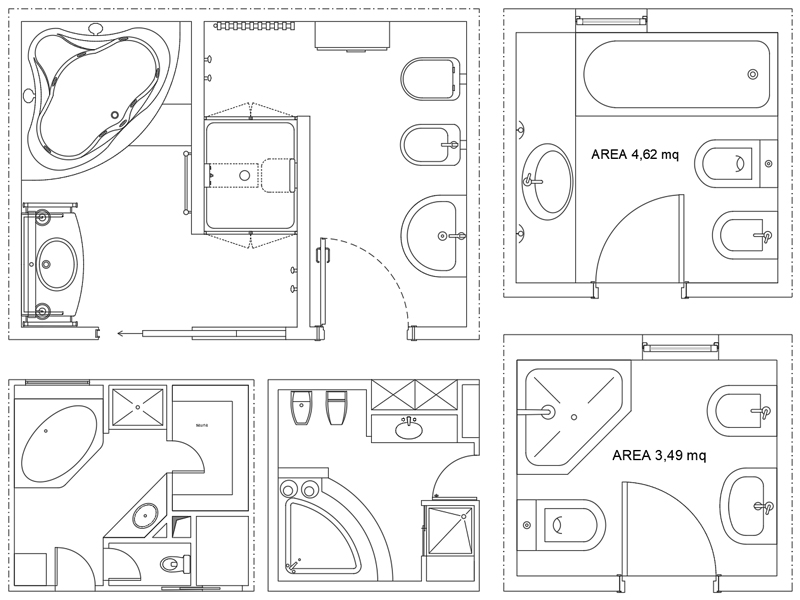A case of laying hexagonal tiles
Cover with a touch of originality and customization
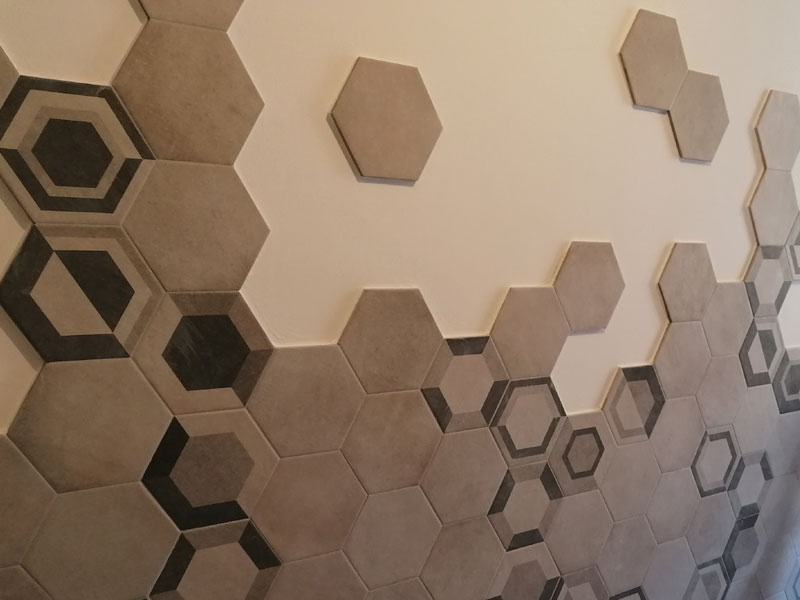
To cover a wall of a bedroom, kitchen or bathroom with a touch of originality and personalization, tiles with hexagonal formats can be used. Such a geometry allows you to “dare” by exploiting the gaps between one element and another to create particular compositions.
In addition to the more usual uniform distribution, it may be interesting to correlate the hexagons together to represent a molecular complex where each element is linked to the others by a unique combination. Furthermore, the combination of the hexagonal tiles with others of different sizes from the same collection or with other materials, such as wood, is pleasant: the effect obtained by the interlocking of said hexagonal elements with parquet strips allows the preservation of the wood essence in correspondence, for example, with the kitchenette and, at the same time, a pleasant and unexpected result.
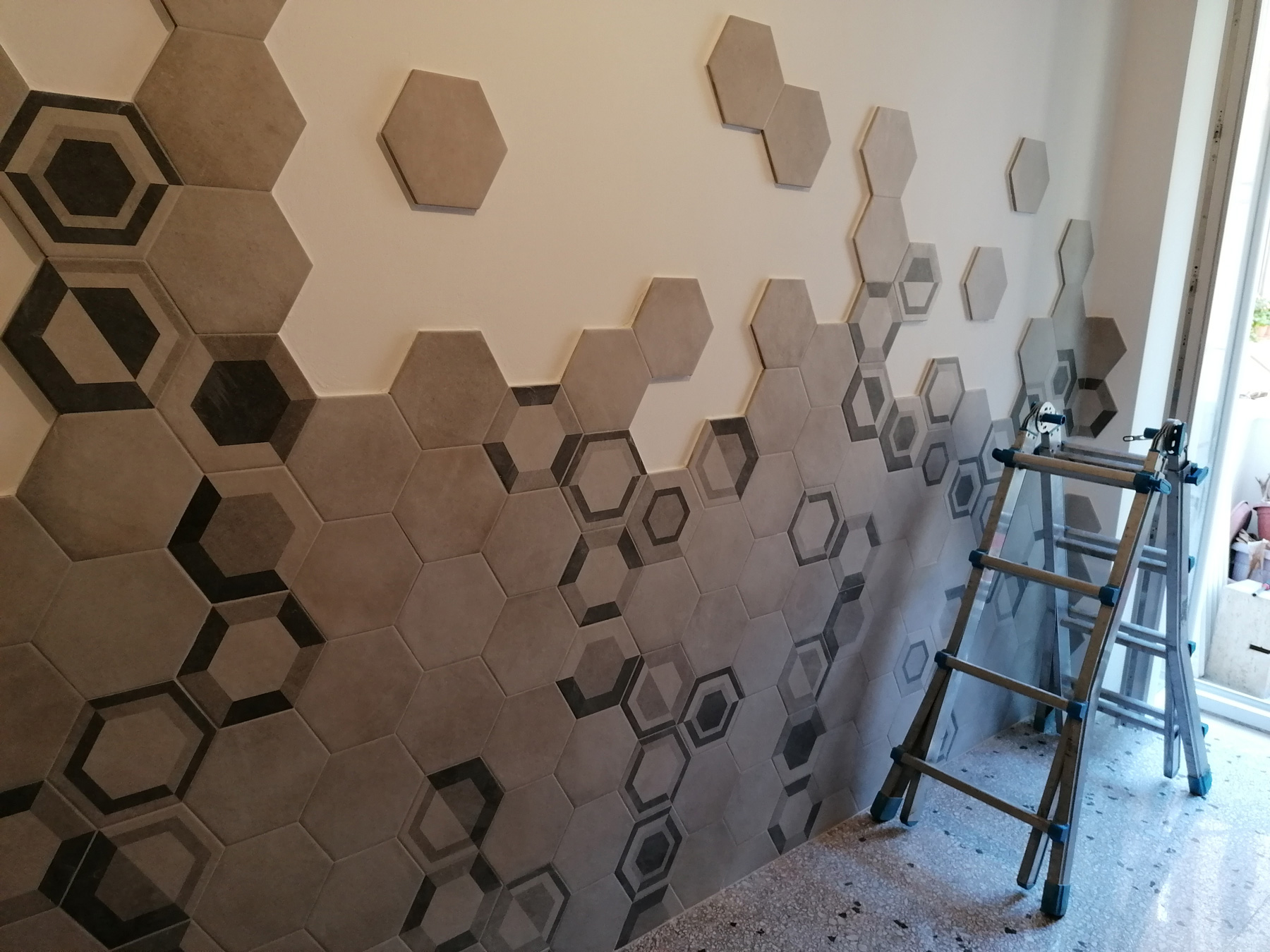
We show you a case made in Rome. The commission required a memory of the native mountain village. It has been chosen to represent, with the use of various types of decorated hexagons, some tree branches on which white snowflakes, represented by neutral tiles, without decoration, lie or have already settled.
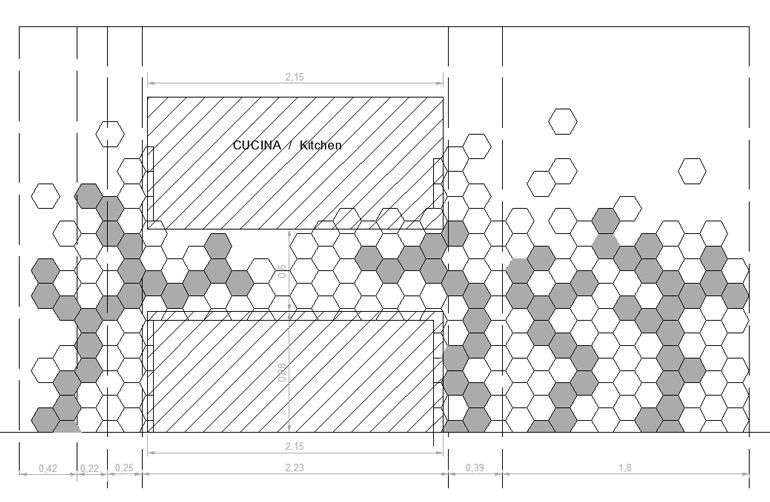
The choice of tiles fell into the Rewind collection produced by Ragno. In detail, the neutral Rewind Vanilla basic elements were combined with those decorated with Rewind Decoro Geometric, both in the hexagonal format 21.8 x 18.2 cm. The measures indicated respectively represent the diameter of the circle where the hexagon (21.8 cm) and the double apothem (18.2 cm) can be inserted. Commercially, the tiles in question are sold in packs of 16 pieces.
During the construction phases, the tiles were glued onto the walls previously prepared with trowelled plaster with a cementitious adhesive with no vertical slip.
There were no particular installation problems due to the high quality of the product and the use – very important to request when ordering the material – of the same caliber for both the base and the docoro tiles.
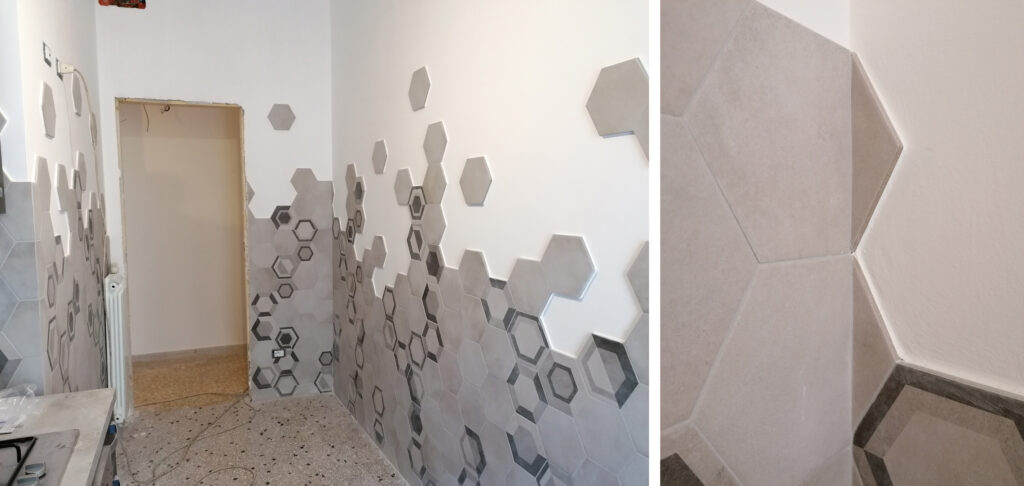
The laying chosen was of the “juxtaposed” type, therefore without joints in order not to introduce further geometries into the design.
For the insulated tiles (outside the composition), nails were still used to stabilize the laying before drying. During the painting phase, paper tape was placed in the edges to prevent the thickness of the tiles from taking on the color.



























































